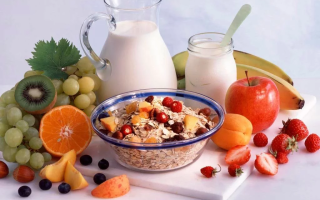Content
A special place in the system of therapeutic measures is occupied by a diet for gastroduodenitis. Regular proper nutrition helps to cope with the signs of the disease and completely destroys its cause - inflammation.
The value of diet for gastroduodenitis
Proper nutrition is half the battle on the road to recovery. The main cause of the disease lies in the use of unhealthy foods. Therefore, the diet for gastroduodenitis in children and adults is crucial.
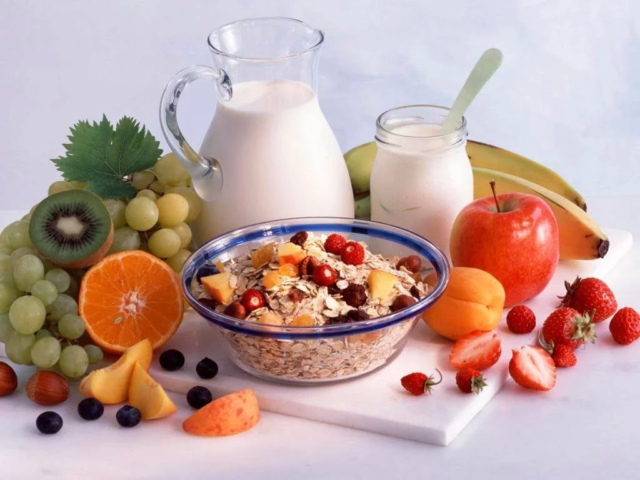
A gentle diet with gastroduodenitis restores the functioning of the duodenum and gastric mucosa. What does proper nutrition provide:
- normalizes the digestive system;
- restores the functions of the digestive tract;
- enhances the process of gastric secretion, the secretion of gastric juice and increased enzyme activity;
- relieves inflammation and irritation of organs;
- accelerates the healing process.
Nutritional features for different types of gastroduodenitis
A necessary condition for successful therapy is strict adherence to a diet with a predominance of low-fat and mild foods. The norm of food per day for chronic gastroduodenitis is 10 g of vegetable proteins and 60 g of animals, 80 g of fat, 230 g of carbohydrates. Calorie content - 1900 kcal per day.
With gastroduodenitis with low acidity, there is insufficient secretion of gastric juice. The patient is prescribed a diet consisting of foods that promote its secretion. Features of nutrition for gastroduodenitis with low acidity:
- thoroughly chewing food;
- chopping food;
- exclusion of hot, bitter, cold, spicy and salty foods;
- eat fruits and vegetables ripe, without peels and seeds;
- the number of meals up to 4 times a day;
- quitting smoking and alcohol;
- food should stimulate gastric secretion, not suppress;
- eat easily digestible foods so as not to damage the mucous membrane of the organ.
The task of the diet for gastroduodenitis with low acidity is to stimulate the release of digestive enzymes and gastric juice. It is permissible to include lactic acid products.
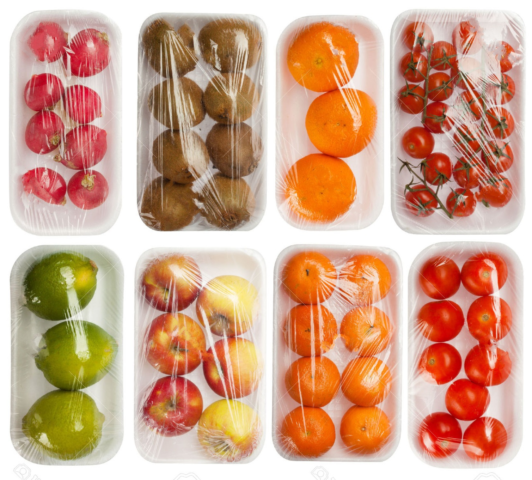
Gastroduodenitis with high acidity is characterized by increased secretion of gastric juice. The task of the diet is to protect the mucous membrane as much as possible. The diet should contain foods that reduce acidity.
Features of the diet for gastroduodenitis with high acidity:
- wipe food;
- steam products, stew, boil, bake;
- fried, smoked, salted, spicy;
- meals are frequent more than 4 times a day at regular intervals, but systematically and in small portions;
- food is better digested if its temperature is within 37 ° C (non-observance of the temperature regime will lead to a decrease in the effectiveness of treatment).
The diet for superficial gastroduodenitis obeys the general laws of building the menu. Dairy products are recommended, they help reduce pain.Eat vegetables and fruits only boiled. The diet is sparing, with a predominance of boiled, stewed and baked dishes. After relief of acute inflammation, table 5 is recommended.
The last meal with a superficial form of the disease is 2 hours before bedtime. Add more fats and proteins to the diet, and reduce the amount of carbohydrates by 2 times.
The diet for a baby with chronic gastroduodenitis is based on the age characteristics of the body. Nutrition principle:
- Increase the frequency of feeding while maintaining the rate of milk intake.
- When signs of dehydration appear (dry lips, rare deurination, lack of tears), complementary foods and water are added. The amount of fluid is increased by 20% of the daily requirement.
- Water is given separately from the milk mixture. This will preserve the nutritional value of the latter.
- If the symptoms of chronic gastroduodenitis appeared after the introduction of complementary foods, then for a while it is recommended to exclude the new product.
A nursing woman should be more attentive to her diet: not to introduce new foods, especially allergenic ones. Eliminate sugary drinks by leaving water. Eat small meals 6 times a day.
Diet for chronic gastroduodenitis: a list of foods
Proper nutrition is an important component of comprehensive treatment of the disease. In order for gastroduodenitis to proceed smoothly and without complications, it is important to adhere to a special diet, which, together with other methods of therapy, allows you to completely recover.
What can you eat with gastroduodenitis
In the chronic form of the course, table number 5 is often prescribed. It implies the stabilization and normalization of the bile ducts and liver. Diet with gastroduodenitis table number 5 significantly reduces difficult soluble fats. It contains enough carbohydrates and peptides.
Diet No. 1 is recommended for chronic gastroduodenitis during an exacerbation, at the stage of remission and with high acidity. It is more often used at the last stage of treatment, since it does not contain products that stimulate gastric secretion. With a disease occurring with low acidity, diet No. 2 is used.
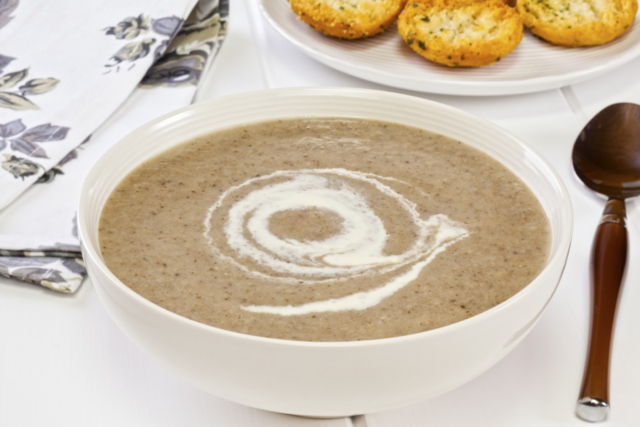
Semolina is the best dietary food. It is allowed to use it for any form of the disease.
With increased acidity, the diet for gastroduodenitis should comply with the principles of table number 1:
- crackers;
- yesterday's gray and white bread;
- durum wheat pasta;
- olive, sunflower, linseed, butter;
- vegetable and fruit juices, green and black tea, rosehip broth;
- lean meats (rabbit, beef, turkey);
- cereals;
- thermally pretreated sweet vegetables and fruits;
- vegetarian puree soups;
- carrots, pumpkin, zucchini, peas, dill and potatoes;
- scrambled eggs).
With low acidity (in addition to the above products) - raw vegetables, meat, mushroom and fish broths, chocolate in small quantities.
The first place in the menu is occupied by cereals: oatmeal, rice, semolina. Natural oatmeal mucus envelops the stomach lining and protects against the action of hydrochloric acid.
On the second - porridge and vegetable soups, mashed soups and broths, with finely chopped or chopped vegetables. Lean meat, boiled sea fish, steamed vegetables. From drinks, gelatinous dishes, milk, rosehip broth are allowed.
Diet with superficial chronic gastroduodenitis limits the use of too hard and heavy food, semi-finished products.The menu includes lean meats, seafood, fish, dairy products, rich in protein. Raw vegetables and fruits are allowed.
Diet for superficial gastroduodenitis includes:
- boiled potatoes;
- beets;
- fruit purees;
- boiled or steamed meat.
The basic diet for atrophic gastroduodenitis is table number 2. It allows the use of meat and fish dishes, dairy and flour products, eggs, rye bread, cereals with milk and unleavened cheese. You can have a small amount of ham without fat.
During the period of remission of chronic gastroduodenitis, the diet is supplemented with vegetable purees, baked apples, oranges and tangerines. Vegetable oils can be added, but only in prepared meals. Dairy and fermented milk products are consumed in small portions. Tomatoes, lean meats, jam, marmalade, casseroles and soft-boiled eggs are allowed.
What is not allowed in the diet for gastroduodenitis
Prohibited foods should not be consumed even in small quantities. They affect the injured mucous membrane, which can provoke an exacerbation of chronic gastroduodenitis.
The following foods fall under the diet ban:
- barley, corn, pearl barley and millet porridge;
- spicy, fried and fatty foods;
- carbonated and alcoholic drinks;
- berries with coarse grains (raspberries and currants);
- freshly baked bread and pastries;
- fatty, smoked and canned fish;
- fat;
- melted butter;
- canned food and semi-finished products;
- fatty meats and poultry.
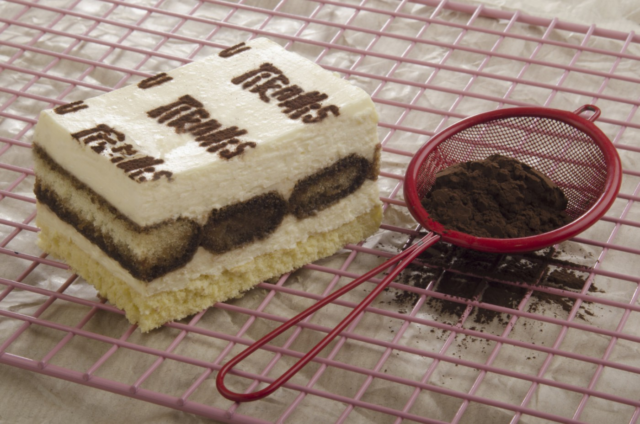
A diet for gastroduodenitis with low acidity excludes gooseberries, figs and dates. You can not drink grape juice, sweet peppers and all legumes.
A diet with a disease with high acidity prohibits the use of fried and boiled eggs. You cannot eat radishes, radishes, cabbage, ice cream.
Diet menu for gastroduodenitis for every day
A nutritionist or gastroenterologist deals with the development of the menu. Below is an approximate nutritional plan for chronic gastroduodenitis.
Diet for gastroduodenitis by day - detailed menu:
|
|
Breakfast |
Lunch |
Dinner |
Afternoon snack |
Dinner |
Second supper |
|
MON |
rice porridge with low-fat milk |
natural compote |
vegetable soup with herbs |
soft-boiled egg, toast, jelly |
steamed chicken cutlets, stewed cabbage with potatoes |
milk |
|
VT |
liquid oatmeal |
jelly |
apple and carrot puree, rosehip broth |
a glass of low-fat kefir, cottage cheese casserole |
|
|
|
Wed |
cottage cheese casserole, berry jelly |
croutons with milk |
buckwheat soup and carrot juice |
pumpkin porridge |
stewed vegetables with low-fat fishcake |
|
|
Th |
omelet, wheat bread toast |
a glass of goat milk |
noodles with cottage cheese and carrot and apple meatballs |
butter sandwich, compote |
steamed meatballs, carrot puree |
buckwheat pudding, a glass of milk |
|
PT |
pureed buckwheat porridge, rosehip broth |
croutons with sugar |
cabbage soup |
steamed omelet |
steamed meat cutlets, pureed buckwheat porridge |
milk |
|
Sat |
omelet, vegetable puree |
fruit smoothie |
mashed rice soup with vegetables, boiled tongue, milk tea |
baked apple |
curd pudding, a glass of milk |
a glass of fat-free kefir |
|
Sun |
a glass of milk, rice porridge |
rosehip broth |
jellied fish, tea with milk, baked apples |
dried bread with a glass of milk |
boiled rice with rabbit meat |
milk |
Conclusion
Diet with gastroduodenitis has a great impact on the patient's well-being. This is a medical nutritional system with certain rules that should be adhered to throughout the entire period of the disease and at the stage of remission. It is important because the disease is a pre-ulcer condition.

